What Are Nursing Homes? Understanding What They Are and Who They Serve

The demographic landscape of the United States is rapidly evolving, with a significant portion of the population entering their mature years. Currently, over 1.3 million older adults reside in nursing homes across the nation, a number expected to surge as the population ages. Knowing the ins and outs of nursing homes is more important than ever, considering how essential they are in supporting aging adults.
These nursing homes, also known as skilled nursing facilities, offer a spectrum of health and personal care services. From 24/7 supervision to assistance with daily activities and post-acute care, nursing homes serve as vital hubs for elder care. Additionally, they provide essential basic services like medication management, nutritious meals, and social activities. As the senior population grows, looking at nursing home services, levels of care, amenities, and demographics becomes increasingly necessary for ensuring the well-being of our aging community members. [1]
Defining a Nursing Home
A nursing home serves as the highest level of care for older adults outside of hospital settings, offering personal care to assist with daily activities like feeding, bathing, and dressing. What sets nursing homes apart from other senior housing options is their provision of comprehensive medical care, overseen by licensed physicians and staffed by skilled nurses available around the clock. These facilities also cater to individuals with chronic diseases, substantial physical or cognitive decline, or complex medical requirements. Nursing homes provide both short-term and long-term residential care options along with a range of on-site medical procedures and therapies not feasible in alternative housing arrangements. [2], [3]
Who Lives in Residential Care Homes?
Nursing homes cater to a diverse demographic profile of residents, typically including older adults in need of round-the-clock care or those facing debilitating health issues. Alzheimer’s disease and other forms of dementia are prevalent among nursing home residents, often necessitating specialized care from trained staff. Additionally, common conditions among residents include hypertension, arthritis, depression, diabetes, and heart disease.
Generally, about one-third of older adults will experience residency in a nursing home, with a significant portion being women aged 85 or older. Various factors contribute to admission, including age, income, family support, and physical or mental difficulties. Residents may require short-term skilled care following hospitalization, long-term support for disabilities, around-the-clock supervision due to cognitive impairments, or specialized memory care to manage dementia-related challenges. Many residents experience overlapping conditions, requiring comprehensive ongoing medical care personalized to their individual needs. [1], [4]
What Types of Care are Offered in Skilled Nursing Facilities?
Nursing homes offer a comprehensive array of care services adjusted to the varying needs of their residents. Primarily, they provide extensive medical care and supervision, including medication management, skilled nursing care, wound care, and continuous monitoring of common health conditions. Some nursing homes provide specialized care for individuals with dementia and other complex conditions, offering personalized memory care services and assistance with behavioral challenges.
In addition to medical care, nursing homes offer necessary assistance with activities of daily living (ADLs), including bathing, toileting, and transferring. These facilities also prioritize the social and recreational well-being of residents by often providing engaging programs and activities designed to promote social interaction and mental stimulation.
With an emphasis on holistic care, nursing homes strive to meet the diverse needs of their residents, ranging from short-term rehabilitation to long-term skilled nursing needs, and provide essential services such as physical, occupational, and speech therapy, nutritional counseling, social work support, and respite care. [3],[4]
Nursing Home Regulations & Standards
Government regulations and oversight play an important role in ensuring the quality of care provided in nursing homes. The Centers for Medicare & Medicaid Services (CMS) and state Medicaid agencies are tasked with enforcing compliance with federal requirements for nursing homes to receive payment under Medicare or Medicaid programs. Each state conducts regular on-site surveys to assess nursing home compliance with these federal regulations, with enforcement actions, or remedies, taken against facilities found to be non-compliant.
Accreditation and certification processes further reinforce quality standards in nursing home care, ensuring adherence to federal requirements and promoting transparency and consistency in the quality of care provided. As CMS strives to improve the effectiveness of enforcement remedies, the importance of maintaining high-quality standards remains paramount in safeguarding the well-being of nursing home residents. [5]
Paying for Nursing Home Care
Nursing home care can be a lifeline for ensuring the well-being of older adults, but the associated costs can be significant. Financing options for nursing home care vary.
Medicare coverage typically pays for stays of up to 100 days following a hospital stay if skilled nursing or therapies are required.
Individuals may use personal funds, including savings, Social Security benefits, or proceeds from the sale of assets, to cover nursing home expenses. Long-term care insurance can also provide reimbursement for nursing home costs, though policy details, such as out-of-pocket periods, can impact coverage.
Medicaid serves as a primary source of funding for nursing home care for those who have depleted their financial resources. Medicaid policies and coverage vary by state, highlighting the importance of understanding eligibility criteria and available benefits. Similarly, Veterans may receive assistance from the Department of Veterans Affairs for nursing home care, depending on their circumstances.
Considering the significant financial implications of nursing home care, individuals and families should explore their options and plan accordingly to ensure access to quality care while managing costs effectively. [3], [4]
Choosing a Nursing Home
When a loved one requires nursing home care, the involvement of family members and caregivers in the decision-making process is critical. Often, family members may grapple with feelings of guilt or sadness about the transition, but it’s important to allow the individual needing care to have a say in decision-making whenever possible.
Supporting a loved one moving into a nursing home involves helping them cope with the loss of independence, maintaining connections with friends and family, and keeping an open mind about their interests. Regular contact and visits from family and friends can significantly ease the transition and provide reassurance to the new resident.
Staying involved allows family members to serve as advocates for their loved one’s needs, ensuring the quality of care remains high. Choosing the right nursing home requires careful consideration of referrals, educational resources, medical needs, room and board options, and proximity to family and friends.
Visiting a prospective nursing home in Baltimore, MD is necessary to assess the quality of care and ensure it aligns with the individual’s needs and preferences. Overall, nursing homes play a significant role in providing essential support and care for older adults, and the involvement of family members and caregivers is vital in ensuring their well-being and comfort. [2]
References
[1] “Total and Percentage of Elderly in Nursing Homes: 2023 Data.” Find Assisted Living, Memory Care and Senior Living, www.aplaceformom.com/senior-living-data/articles/elderly-nursing-home-population. Accessed 10 Apr. 2024.
[2] Melinda Smith, M.A. “A Guide to Nursing Homes.” HelpGuide.Org, 5 Feb. 2024, www.helpguide.org/articles/senior-housing/a-guide-to-nursing-homes.htm.
[3] Person. “Nursing Homes: A Comprehensive Guide.” NCOA Adviser, National Council on Aging, 22 Feb. 2024, www.ncoa.org/adviser/local-care/nursing-homes/.
[4] “Nursing Homes.” Nursing Homes | HealthInAging.Org, www.healthinaging.org/age-friendly-healthcare-you/care-settings/nursing-homes. Accessed 10 Apr. 2024.
[5] “Nursing Home Enforcement.” CMS.Gov, www.cms.gov/medicare/health-safety-standards/enforcement/nursing-home-enforcement. Accessed 10 Apr. 2024.
The information provided in the article is for general informational purposes only. This information is not a substitute for medical advice. Accordingly, before taking any actions based upon such information, you are encouraged to consult with the appropriate professionals.



